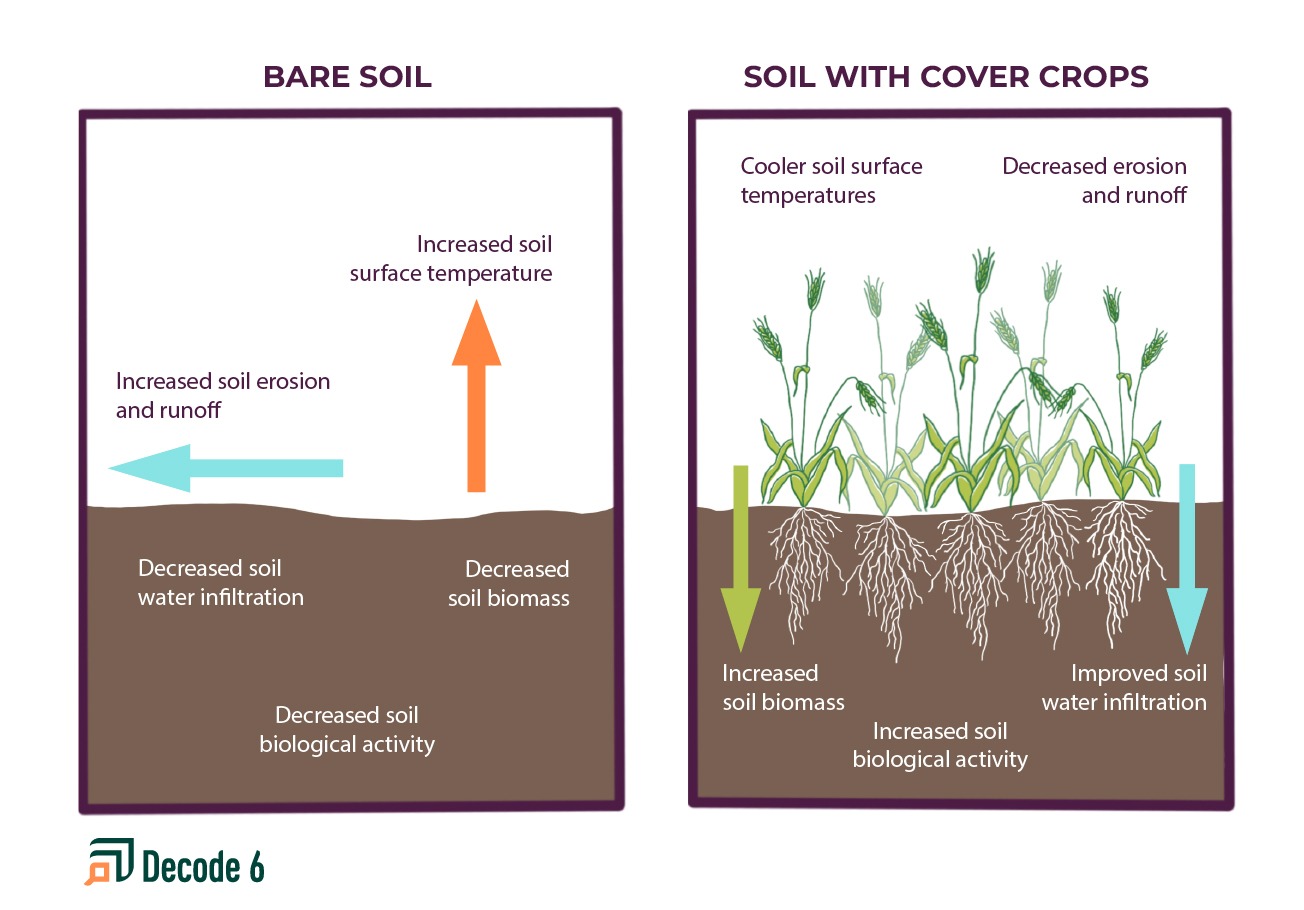How Can Cover Crops Help Sequester Soil Carbon?
The short answer: Cover crops help sequester soil carbon by providing an additional source of biomass to the soil. Biomass includes the aboveground plant dry matter (leaves, stems) and below ground dry matter (roots). More biomass production means more opportunities to turn organic matter into sequestered carbon.
Break it down: cover crops include annual or perennial brassicas, legumes, cereals, and other broadleaf species.
- Cover crops are often grown for their soil health benefits, not for a harvested product (though there are some exceptions).
- They can also provide forage for grazing animals.
- They physically protect the soil, preventing soil erosion and improving weed control.
- They can add nutrients to the soil (nitrogen) and boost decomposition of plant residues, contributing to soil carbon accumulation.
When it comes to soil carbon, cover crops sequester carbon by keeping roots of actively growing plants in the ground much longer compared to only growing a primary crop. They can also work to sequester carbon in areas not established with the primary crop or crops, like underperforming parts of agricultural fields or buffer strips between fields.
Here’s how cover crops help sequester carbon:
- Plant matter enters the soil as biomass, providing a carbon source for soil microbes.
- Cover crops provide root biomass to the soil, and their residues can return carbon and nutrients to the soil. This additional source of biomass builds soil organic matter and improves soil .
- Microbes increase carbon in the soil as they break down plant matter, but also as they die and their bodies—or necromass—accumulates in the soil.
The big picture: When it comes to soil carbon, more plants mean more biomass, which means more soil carbon. Plus, cover crops can help improve carbon sequestration in soils that underperform or are not managed in typical rotations. They are a versatile option for improving soil health and increasing carbon sequestration.
If you’re interested in trying cover crops, carefully research options that will work in your region, with your cropping system, management practices, climate, and soil type. Here are two tips for getting started:
- Check out region-specific information about cover crops from Sustainable Agriculture Research and Education (SARE).
- Ask your trusted advisers—Certified Crop Agronomists, Certified Professional Agronomists, Extension Agents, and neighboring farmers— your questions about your farm. They’re the best way to get tailored information for your own fields.
Photo courtesy NRCS Oregon by Garrett Duyck.









